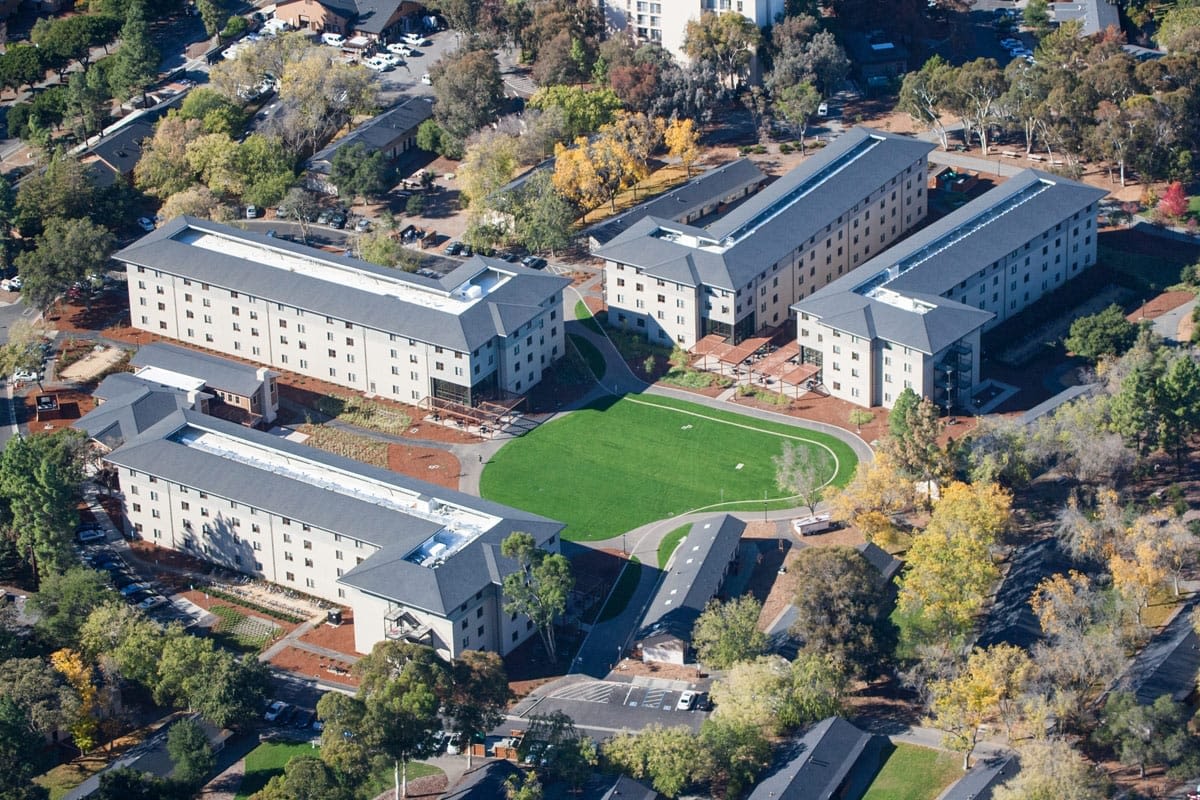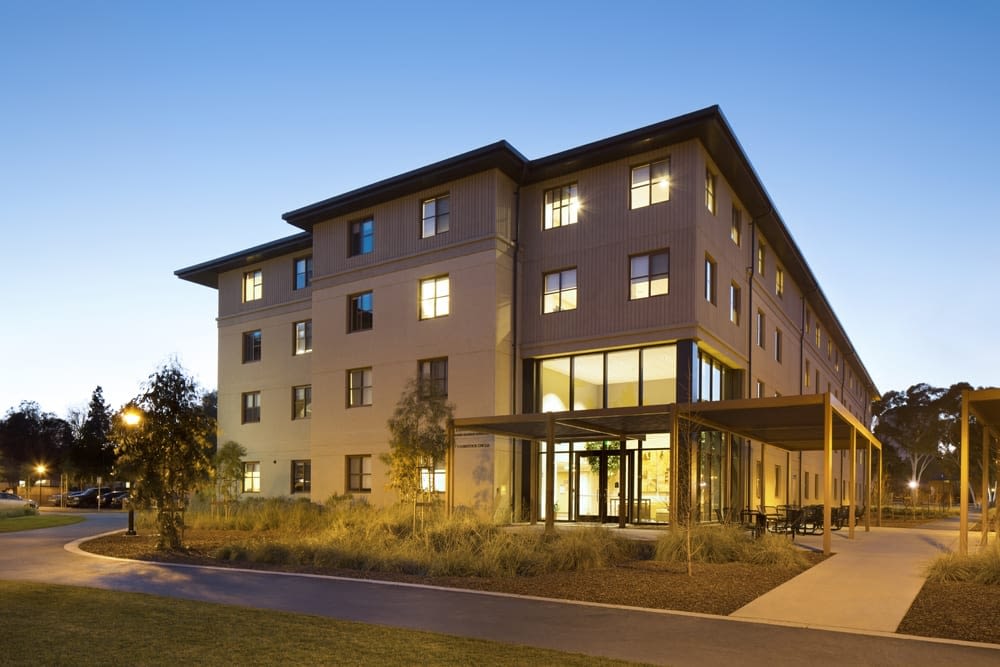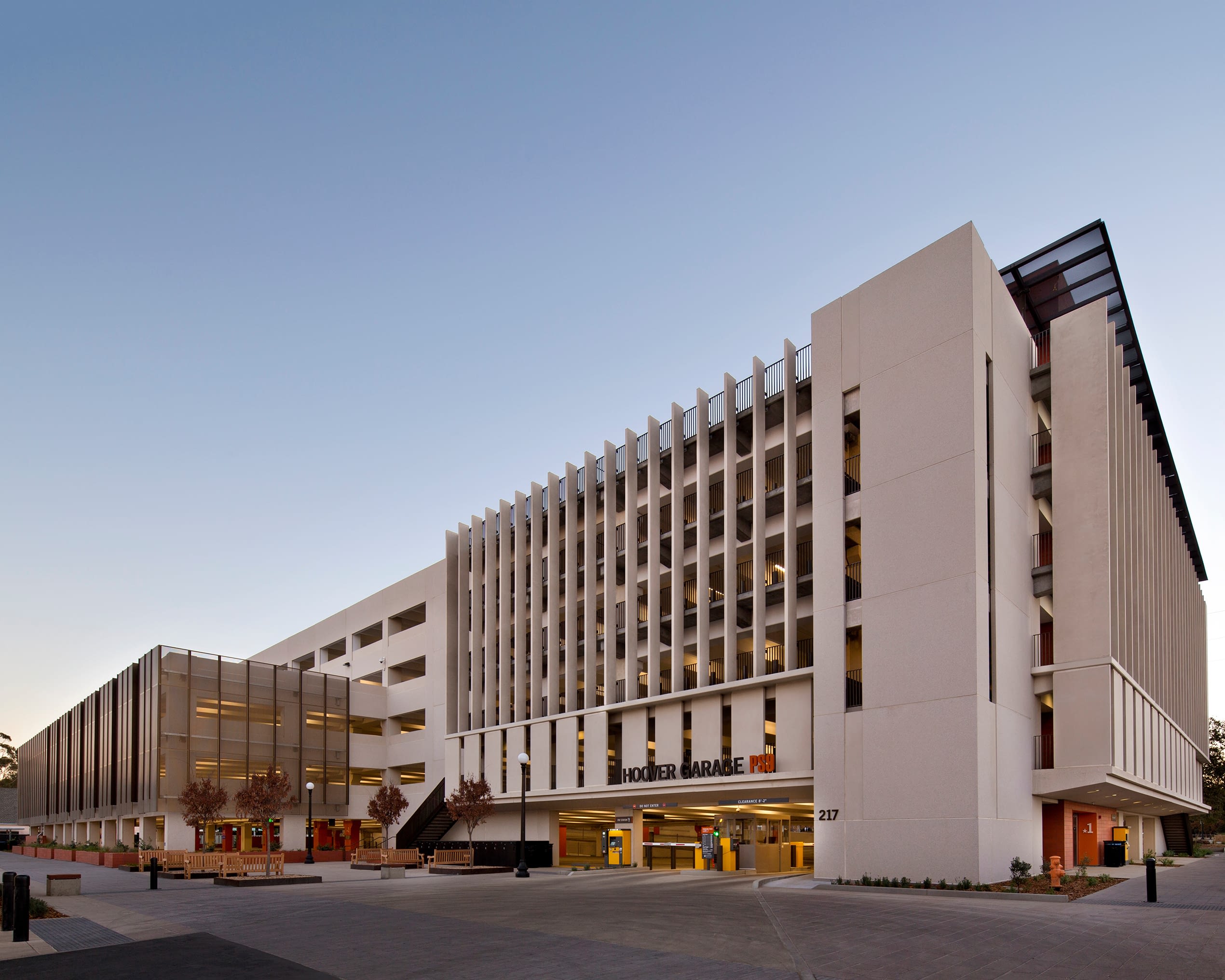The culture of innovation indelibly linked to the San Francisco Bay Area does not stop with information technology. The region’s building contractors, architects and engineers routinely challenge competitors with cutting-edge software, novel collaboration techniques and new project-delivery processes. The collective goal is to create new and better ways to build more structurally sound, more environmentally sustainable, more functional and aesthetically pleasing buildings—all while extracting additional value for every dollar.
Clark Pacific has led innovation in precast concrete manufacturing for architectural cladding. Now the company is expanding its precast concrete panel technology from the cladding to the structure and is completing both at the first vertically post-tensioned buildings in Northern California: the 250,000-square-foot Comstock Graduate Housing on the Stanford University campus.
General contractor Vance Brown Builders elected to use the new technology because it satisfies the seismic requirements associated with being less than 10 miles from the San Andreas Fault. It also allowed the company to promise the university it could deliver the housing within 14 months, said John Wong, the Vance Brown project manager for the Comstock housing.
“We had four buildings up in three months. Usually, that would have taken the better part of six to nine months.”
“Once the third floor was up, we could start working on the first floor, whereas with traditional construction we would have had to wait,” he said. “The engineering is very leading-thought.”
Comstock consists of four new four-story buildings and a common community center. It replaces a nine-building housing complex with a total of less than 80 beds. Construction on Comstock began in April 2013 and is due to be complete in June 2014.
“This system was in the making for a long time. We contracted with an outside engineering company and Suzanne Dow Nakaki of Nakaki Structural Design, who has done a lot of research and testing. This is the first real, practical application of this technology in the United States,” said Palmer, Clark Pacific’s project manager on Comstock.

In the last 10 years, college-student housing—both on-campus and purpose-built nearby—has emerged as a stand-alone real estate investment class. Universities and colleges have stretched to meet increased demand for more and better quality student housing as the oldest members of the giant millennial generation have arrived on campus. The generation is even larger than the baby-boomer bulge, which has dominated American tastes for decades. While the exact contours of the cohort’s beginning and end remain in debate, the leading edge of the 80-million-person millennial generation was born in the early 1980s and came of age at the turn of the century. The last millennials (or echo boomers or Gen Yers) were born in and around 2000.
Based on federal projections, college enrollment nationally should rise through 2021, and public developers dedicated to the industry predict continued expansion in demand for new student beds concentrated at four-year universities with 10,000 students or more. Besides absolute growth in bed counts, developers are often displacing older single-family properties near campuses that have evolved to the use, with modern, purpose-built student housing, which has proved more popular.
For Clark Pacific, these demographic and cultural trends have translated to a growing demand for, and expertise in, modern college and graduate-student residence halls. Since 2009, when it helped to build the 600-bed Munger Graduate Residence on the Stanford campus, the company has undertaken three student-housing projects. In 2011, it helped complete the first LEED Platinum certified residence halls in California at Pomona College in Claremont.
Designed by Culver City-based Ehrlich Architects, Pomona Hall and Sontag Hall feature massive precast concrete wall panels designed and created by Clark Pacific. “The panels’ smooth exteriors belie surprising interior complexity,” said Whitney Wyatt, the Ehrlich architect who led the project. That meant multiple layers and diverse materials to increase the panels’ thermal mass. It required Clark to integrate the conduit to house the connections that allow the buildings’ window operations to integrate with its heating, cooling and ventilation systems. “So when the students open the windows, the mechanical system automatically turns off,” Wyatt said.
“The panels look simple and straight forward, but there is so much more involved,” she said. “Clark Pacific really helped us to realize what we were wanting to do. They helped us to improve the design.”
The architects selected concrete as an integral material for the project because much of the campus’s existing building, especially the residence halls, features poured concrete, Wyatt said. The college, founded in 1887, is one of the oldest on the West Coast.
Pomona and Sontag were designed to house juniors and seniors at the liberal arts school, which has 1,600 students and provides on-campus housing for 97 percent of those enrolled.
Clark engaged with the company even before being awarded the contract for the work, the architect said: “I don’t get a lot of subcontractors to come in and work with us before they have the job and thinking ahead of time, so that was unique. In the end, it was such a big part of the overall visual aesthetic of the building that it was really crucial.”



